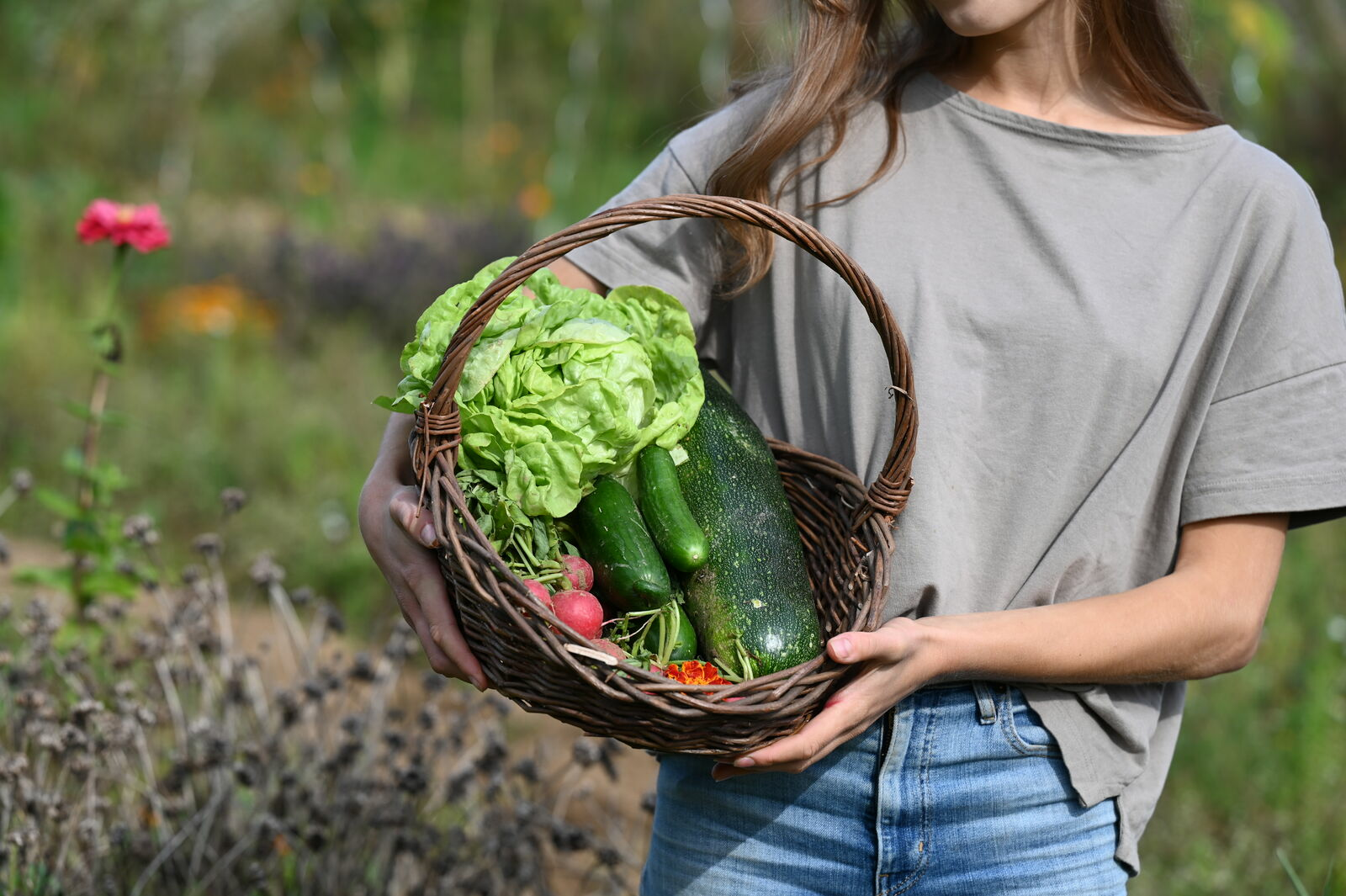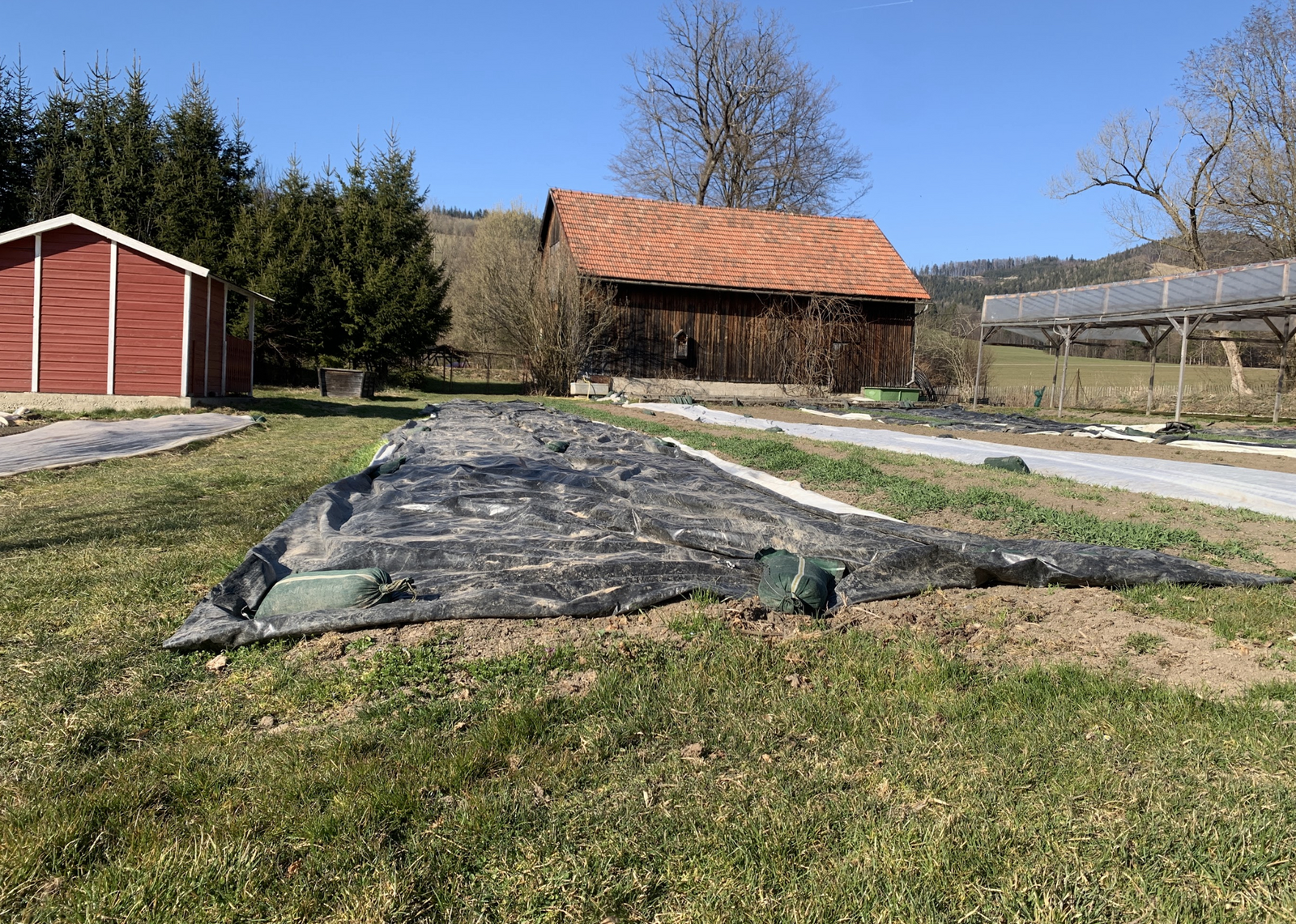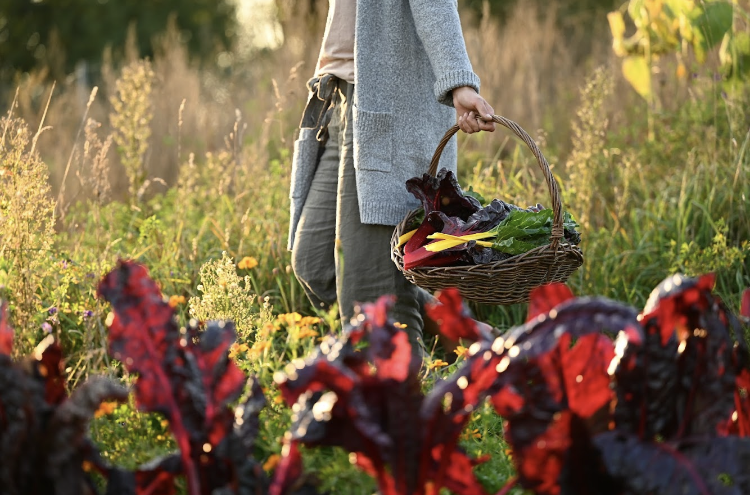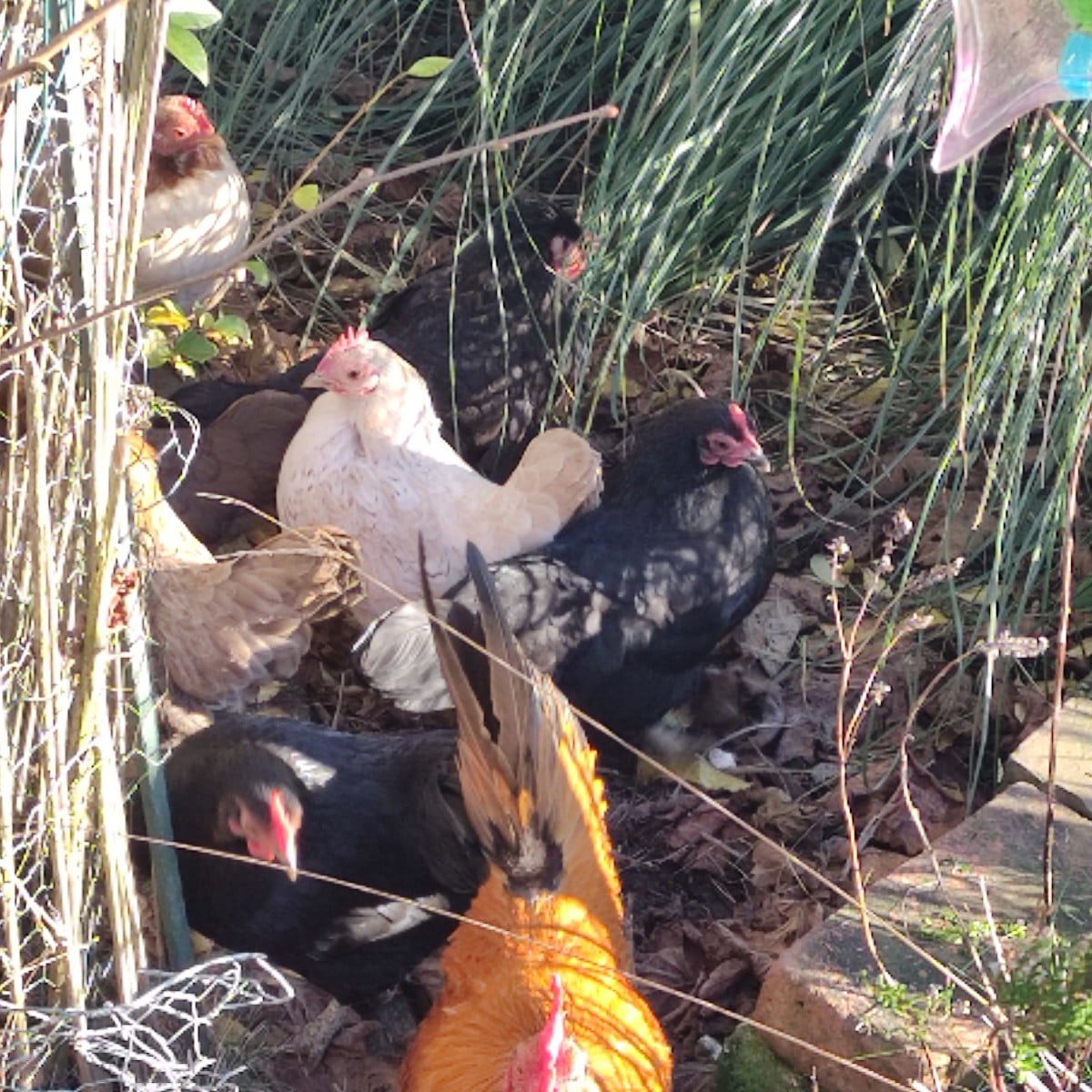
Yield Calculator for Vegetables: Calculate Area Requirements & Harvest Quantities
As a self-sufficient grower, it is important to know how much yield you can expect from your bed area. You can easily calculate this with our yield calculator. On the other hand, you can also calculate how much space you need to have enough vegetables for you and your loved ones. We also provide tips and guidelines on the amount of vegetables and space required for one person per year.
This Article Contains:
- Yield Calculator - Calculate Vegetable Yields
- Become Self-Sufficient: Calculate Vegetable and Space Requirements
- Vegetable Requirement per Person and Year
- Space Requirement per Person and Year
- The Challenges of Self-Sufficiency
- Planting a Self-Sufficient Garden: Tips for a Rich Harvest
- Heavy Feeder Vegetable Varieties for Beginners & Professionals
- Frequently Asked Questions About the Yield Calculator
Quick Overview
Yield Calculator: Calculate Your Harvest
With our yield calculator, you can work out how much vegetable yield you can expect per square meter on a certain area. Conversely, you can calculate how much area you need to achieve a certain yield.
Becoming Self-Sufficient: How Much Space and Yield Do I Need?
- Average vegetable requirement per person and year: around 160 to 220 kg/353 to 485 pd of vegetables
- Average area required for self-sufficiency per person:
- Complete self-sufficiency: 120 - 150 m2/144 - 179 yd2
- Partial self-sufficiency with vegetables: 40 - 60 m2/48 - 72 yd2
- These are only guidelines for orientation. Actual requirements depend heavily on personal preferences and eating habits!
Yield Calculator - Calculate Vegetable Yields
What Is a Yield Calculator?
Yield calculators are tools used in agriculture to calculate the yield of vegetables per unit area. The yield is an important parameter for planning and growing plants. Especially if you want to be self-sufficient, you need to calculate in advance how many vegetables and therefore how much space you need for yourself and your loved ones. You can also calculate the exact number of plants and seeds and only grow as many plants as you need. This saves resources and time.
Become Self-Sufficient: Calculate Vegetable and Space Requirements
To calculate the amount of vegetables and land required for self-sufficiency, you should first answer the following questions:
- How many people should be catered for?
- Do I want to be completely self-sufficient or only partially (e.g. only (certain) vegetables)?
- Which vegetables do I want to grow?
- What are my growing conditions?
- How much space do I have available?

Vegetable Requirement per Person and Year
An average person needs at least 160 to 200 kg/353 to 441 pd of vegetables per year to provide for themselves. So if a family of four wants to be self-sufficient in vegetables, they will need around 600 to 800 kg/1322 to 1764 pd of vegetables per year. It is very important to note that this is only an estimate. The actual amount of vegetables required varies greatly depending on people's eating habits and preferences. You can start with this average and adjust it to your individual needs over time. Alternatively, you can do the groundwork and write down your requirements for the vegetables you want to grow for a year. Once you know your vegetable requirements, you can use our yield calculator to work out roughly how much space you will need to achieve these harvest quantities. This will give you an initial indication of how much space and time you need to grow your own vegetables. You should also be aware that you can't grow your own food on the side and that it can be a lot of work. You can roughly expect 30 to 40 minutes of work per m2/1.2 yd2 per year. However, there are clearly also peaks with significantly more work, especially in spring at planting time and in summer for maintenance.
Space Requirement per Person and Year
Depending on the degree of self-sufficiency, you will need different amounts of space. If you only want to be self-sufficient with vegetables, you will need around 50 to 60 m2/60 to 72 yd2 per person for this alone (excluding potatoes). This space is further divided into 20 m2 of vegetables for fresh consumption or for preserving. 40 m2/48 yd2 of stored vegetables such as carrots, parsnips and root parsley, because as a self-sufficient person you also need to think about winter. If you also want to be self-sufficient with fruit, you should plan about 100 m2/120 yd2 for this.
Table: Minimum Areas per Person and Type of Self-Sufficiency
| Level of Self-sufficiency | Minimum Area per Person |
|---|---|
| Almost Complete Self-Sufficient (Vegetarian) | 125 - 150 m2/150 - 180 yd2 |
| Partially Self-Sufficient | |
| only vegetables | 40 - 80 m2/48 - 96 yd2 |
| Potatoes | 90 m2/108 yd2 |
| Fruits | 100 m2/120 yd2 |
The Challenges of Self-Sufficiency
There are many factors that influence the yield of vegetables. The most important influences include the weather, soil conditions, choice of variety and cultivation and care measures. The weather is probably one of the factors that we as gardeners are at the mercy of. If it is a dry year, a balanced water supply must be ensured, otherwise the harvest will be poor. Most vegetables absolutely need enough moisture for healthy growth. However, too much rain, waterlogging and comparatively few hours of sunshine can also have a negative impact, especially on exotic vegetables such as tomatoes and peppers. They have a long vegetation period and grow relatively slowly. We cannot control rain, wind and sunlight. This makes it all the more important to adapt your cultivation and care measures flexibly to environmental conditions. You can also influence your harvest success with your choice of variety and select resistant varieties. It is also important to grow a wide variety of different plants to cushion any harvest losses.

Planting a Self-Sufficient Garden: Tips for a Rich Harvest
- Choosing the right variety can have a positive influence on yield. Some varieties are particularly resistant or well adapted to a region. So when choosing a variety, consider the requirements of the location and climatic conditions. Old varieties in particular are usually more robust, but often produce a smaller harvest. You have to weigh things up here: Do you often have crop failures due to diseases and pests? If so, it might be worth growing robust varieties.
- Cultivation and care measures such as thinning, watering, fertilizing and pruning are also decisive for the harvest quantity. Regular care and the removal of weeds can promote the growth and development of your plants.
- The soil is also an important factor. The soil should be rich in nutrients and well aerated to promote healthy root growth. A good soil structure and a sufficient supply of nutrients are crucial for a rich harvest. You should therefore always apply good Organic Fertilizer and organic slow-release and liquid fertilizers. Regular green manuring is also advisable to maintain soil fertility.
- Make good use of your available space and Plan Mixed Crops With Pre- And Post-crops. On the one hand, this prevents diseases and pests. It also improves the growth of some vegetable plants and sometimes even their taste.
- Staggered sowing increases your harvest window. You also make good use of the space, as the small plants only take up a lot of space when the other crops have already been harvested. Staggered planting allows you to make use of gaps in your bed.
You can find more Tips on Planning and Creating a Self-Sufficient Garden in the article. Here we explain what you should think about if you want to become a self-sufficient gardener. We have also prepared a planting plan for a self-sufficient vegetable garden.
Heavy Feeder Vegetable Varieties for Beginners & Professionals
Some vegetables are particularly productive and will give you a rich harvest. These include tomatoes, cucumbers and pumpkins in particular. With sufficient water and enough sun, these plants can produce significantly higher yields than root vegetables such as carrots or radishes. Below is an overview of the harvest weight of some crops. The number of plants per square meter is also listed, making it easier for you to plan your cultivation. This also allows you to calculate your seed requirements and buy seeds in a more targeted manner.
Table: Average Yields per Square Meter for Vegetables
| Vegetables | Yield in kg per m2/1.2 yd2 | Plants per m2/1.2 yd2 |
|---|---|---|
| Bush beans | 1 - 2 | 30 - 40 |
| Broccoli | 1,5 - 2 | 4 |
| Cauliflower | 3 | 4 |
| Iceberg lettuce | 2,5 - 4 | 15 |
| Peas | 2 - 4 | 30 - 40 |
| Lamb's lettuce | 0,5 - 1 | 35 - 40 |
| Fennel | 2 - 3 | 25 |
| Green cabbage | 1,5 - 2 | 4 |
| Cucumber | 4 - 25 (in greenhouse) | 4 |
| Potatoes | 3 - 5 | 4 - 6 |
| Garlic | 0,5 - 1,5 | 30 - 35 |
| Kohlrabi | 2 - 3 | 10 - 15 |
| Head cabbage | 5 - 8 | 4 |
| Lettuce | 3 | 15 - 25 |
| Pumpkin | 3 - 6 | 1 |
| Chard | 4 - 5 | 10 - 15 |
| Carrots | 3 - 5 | 30 - 50 |
| Parsnip | 4 - 5 | 15 - 25 |
| Peppers | 5 - 15 (in greenhouse) | 5 - 9 |
| Plucked lettuce | 1,5 - 3 | 15 - 25 |
| Leeks | 2,5 - 4 | 15 - 20 |
| Radishes | 2 - 3 | 35 - 50 |
| Radish | 3 - 4 | 25 - 35 |
| Brussels sprouts | 1,5 - 2 | 4 |
| Beetroot | 3 - 6 | 35 - 40 |
| Celery | 2 - 5 | 9 - 15 |
| Onion | 3 - 6 | 35 - 50 |
| Spinach | 2 - 3 | 40 - 50 |
| Runners bean | 2 - 4 | 20 - 35 |
| Tomatoes | 4 - 25 (in greenhouse) | 4 - 6 |
| Courgette | 4 - 6 | 1 - 2 |
These figures are only guidelines and vary depending on the variety and location as well as environmental influences such as weather.
If you have any questions, problems or comments, please write to us at [email protected]. Would you like to receive helpful gardening tips all year round and plan your own beds optimally? Then register here or download the Fryd app for Android or iOS.
Fryd - your digital bed planner

Marie
Marie is an agronomist. She is particularly interested in the sustainable and organic cultivation of vegetables and other plants. In her own garden, she gained experience and likes to try things out to learn from nature. She is particularly interested in the values and principles of permaculture, in order to contribute not only to the well-being of nature, but also to the well-being of people and future generations.
Learn MoreCurrent Topics in the Community

The chickens are not happy about the cold weather.

Without words

Liked 2 times
It may have actually worked with the shiitake smuggled into the fallen birch tree in our forest 🍄
Popular Articles

Overwintering Parsley: How to Do It Successfully

How to Grow Lettuce in Winter: Varieties, Sowing, Harvesting

Growing Sage Plant: Tips for Sowing and Harvesting

What Herbs Can Be Planted Together?

Create & Design a Permaculture Garden

Overwintering Plants: Tubs, Pots and Raised Beds

Pruning, Fertilizing & Propagating Currants: Care Tips

Pruning Raspberries: How to Do It

Vegetable Garden With Greenhouse: How to Use Greenhouse Effect

Winterizing Beds and the Garden: How to Do It
FAQ
A yield calculator is a useful tool for self-sufficient growers. It allows you to easily calculate how much yield you can expect from your bed area. Conversely, you can also calculate how much space you need to have enough vegetables available for you and your loved ones.
How many vegetables does one person need per year?
The average person needs at least 160 to 200 kg/353 to 485 pd of vegetables per year to be self-sufficient. The requirement varies depending on personal preferences and the degree of self-sufficiency.
How much space do you need for self-sufficiency?
It all depends on whether you want to be partially or fully self-sufficient. For partial self-sufficiency with vegetables, you need around 50 m2/60 yd2. For fruit, you should allow for an area of around 100 m2/119 yd2.
Which vegetables are particularly high-yielding?
The exotic crops in particular produce a good yield: Cucumbers, zucchinis, tomatoes and pumpkins. However, it depends very much on whether you grow these crops in a greenhouse and on the weather conditions during the gardening year.